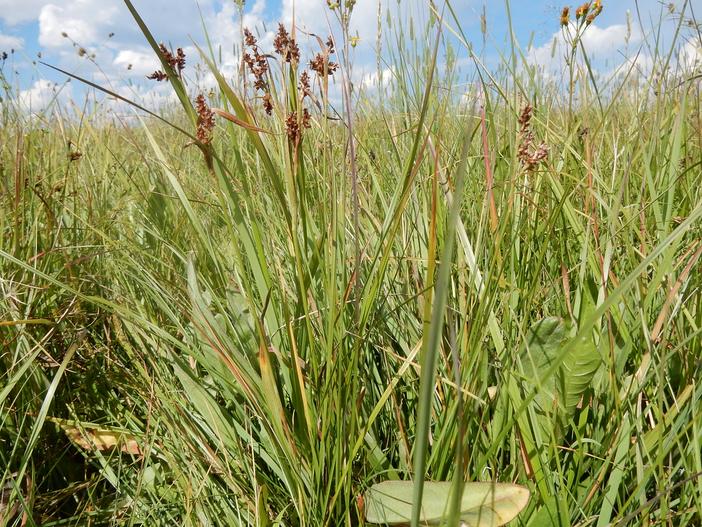Common Woodrush
(Luzula multiflora subsp. frigida)
Common Woodrush (Luzula multiflora subsp. frigida)
/
/

Matt Lavin
CC BY-SA 2.0
Image By:
Matt Lavin
Recorded By:
Copyright:
CC BY-SA 2.0
Copyright Notice:
Photo by: Matt Lavin | License Type: CC BY-SA 2.0 | License URL: https://creativecommons.org/licenses/by-sa/2.0/ | Uploader: Matt Lavin | Publisher: Flickr




Estimated Native Range
Summary
Luzula multiflora subsp. frigida, commonly known as Common Woodrush, Frigid Woodrush, Northern Many-Flowered Woodrush, Many-Flowered Woodrush, or Northern Woodrush, is a perennial herb native to cool temperate regions of the Northern Hemisphere, including boreal forests and subarctic meadows. It is often found in moist, shaded environments such as the understory of boreal forests, along streams, and in open alpine areas. This species typically grows at a moderate rate to a height of 1-2 feet (0.3-0.6 meters) and a width of 1-1.5 feet (0.3-0.5 meters). It forms dense clumps of grass-like leaves and produces brown, inconspicuous flowers that bloom in the spring, followed by seed capsules that may persist into the fall.
Common Woodrush is valued for its ability to thrive in shaded conditions and its textural foliage, which adds visual interest to woodland gardens and naturalized areas. It is used for ground cover, erosion control, and as an accent plant in shade gardens. It is adaptable to a range of soil types, including clay, loam, and sandy soils, provided they have medium to fast drainage. While it prefers consistent moisture, it can tolerate some dryness once established. It is also relatively low-maintenance, requiring minimal care once established in the appropriate environment.CC BY-SA 4.0
Common Woodrush is valued for its ability to thrive in shaded conditions and its textural foliage, which adds visual interest to woodland gardens and naturalized areas. It is used for ground cover, erosion control, and as an accent plant in shade gardens. It is adaptable to a range of soil types, including clay, loam, and sandy soils, provided they have medium to fast drainage. While it prefers consistent moisture, it can tolerate some dryness once established. It is also relatively low-maintenance, requiring minimal care once established in the appropriate environment.CC BY-SA 4.0
Plant Description
- Plant Type: Grass
- Height: 1-2 feet
- Width: 1-1.5 feet
- Growth Rate: Moderate
- Flower Color: N/A
- Flowering Season: Spring
- Leaf Retention: Evergreen
Growth Requirements
- Sun: Full Sun, Part Shade
- Water: Medium
- Drainage: Medium, Fast
Common Uses
Low Maintenance, Rock Garden
Natural Habitat
Cool temperate regions of the Northern Hemisphere, including boreal forests and subarctic meadows
Other Names
Common Names: Frigid Woodrush, Northern Many-Flowered Woodrush, Many-Flowered Woodrush, Northern Woodrush
Scientific Names: , Luzula multiflora subsp. frigida, Luzula campestris var. frigida, Luzula frigida, Luzula frigida, Luzula kjellmaniana subsp. frigida, Luzula multiflora subsp. frigida, Luzula multiflora subsp. frigida, Luzula multiflora subsp. fusconigra, Luzula multiflora var. contracta
GBIF Accepted Name: